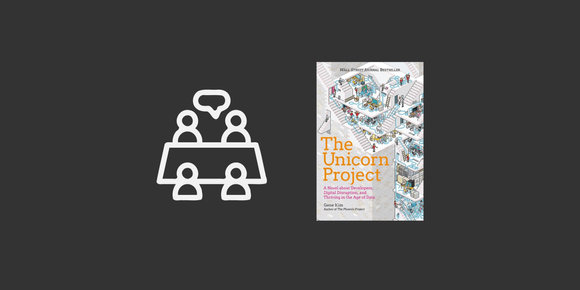
Photo by Clay Banks on Unsplash
Retrospectives need to be productive and engaging or participants will quickly tune them out. Here are some techniques to hold more interesting retros.
A retrospective (retro) is a meeting with a regular cadence to analyze the actions and outcomes of a team since the last meeting. The goal of a retro is to help drive continuous improvement. Retros happen most often at the end of Scrum Sprints, but they can be just as effective at the end of projects or events where more than one team might be involved.
Most retros use some kind of physical or virtual wall, such as a dry-erase board, where participants write on sticky notes and place them on the wall in groups, typically in vertical swim lanes. This article assumes you have participated in a retro before or are at least familiar with the practice.
It's always worth repeating that it is important to keep retros blameless - the discussion should focus on processes and outcomes, not individuals.
What went well, to improve, action items
This is one of the more popular retro techniques because of its simplicity. Its three categories are:
👍 What went well: what helped us achieve our goals? What accomplishments or successes are we proud of?
There could be some difference in opinion here, and those items can turn into action items. One person might think of a task as a success, while another might think there's still room for improvement. This is also a great time to recognize other team members!
💭 To improve: what can we iterate on to help achieve our goals?
Every item here should produce at least one action item. I prefer to stay away from the negative "what went wrong" phrasing.
📝 Action items: what can do we differently?
These should be followed-up on at the next retro.
This type of retro is designed to help focus on positives and prompt gratitude, as well as put a positive spin on negatives by creating actionable tasks out of them.
By keeping the number of categories small, this technique tends to be lighter-weight.
Start, stop, continue
This retro technique specifically focuses on actions in three parts:
▶️ Start️: what might have a positive impact that we could start doing?
These are suggestions that don't have to be adopted long-term. They should be revisited in the next retro under "stop" and "continue".
⏹ Stop: what isn't helping us achieve our goals that we should stop doing?
This could be processes that add overhead and little value, or activities that are negatively impacting team members' emotions.
🔁 Continue: what is working well that isn't common practice yet that we should continue doing?
It's good to reflect on what practices have been helpful. This could also include practices that haven't been in effect long enough to evaluate yet.
These categories help focus the discussion on practical ideas to help improve the team and its processes.
An alternative ordering to start, stop, continue that might make more chronological sense is continue, stop, start. This ordering could help create more "start" action items after discussing the other categories first, and it helps set the tone of the meeting with positives at the start.
Starfish
The starfish retrospective is an extended and re-ordered version of start, stop, continue by Patrick Kua that adds two new sections:
🔁 Keep doing: same as "continue", but focused on practices that are widely adopted
⬇️ Less of️: practices or processes that need refining or are only sometimes helpful.
These add value, but maybe not as much as other items, or may need some tweaking to bring out the most value. Maybe these processes don't add enough value for the effort. An example could be standup meetings that are too frequent, or meetings without a clear agenda.
⬆️ More of️: practices or processes that team members are excited for but still need some refinement.
This could be team norms or processes that need a little longer to become standard such as pair programming or engineers sitting in on user research calls.
⏹ Stop doing: same as before
▶️ Start doing️: same as before
Liked, learned, lacked, longed for
Known as the 4L's, this technique developed by Mary Gorman and Ellen Gottesdiener focuses on both facts and emotions:
🙂 Liked: what did we enjoy, or what went better than expected?
These items could be accomplishments, gratitude, processes, or even new technologies.
🧠 Learned: what technical or non-technical things did we learn?
This is a chance for knowledge sharing with the team! This could be anything from programming techniques to company-specific jargon.
😞 Lacked: what was missing, or what was unclear?
Items could range from lack of guidance, a desired productivity tool, people resourcing, or missing processes.
💭 Longed for: what did the team wish existed?
The difference between "longed for" and "lacked" is that this category is more aspirational, items here might not exist or be possible just yet, but are still worth discussing.
This format is great because it starts off with two positive categories and ends with two that can be turned into action items.
Mad, sad, glad
Based on team emotions, mad, sad, glad helps get a pulse on the team's morale and job satisfaction. Here are the three parts:
- 😡 Mad: what is making you frustrated or annoyed? What is stopping you from doing your best work?
- 😔 Sad: what is making you disappointed? What do you wish could be improved?
- 😀 Glad: what is making you happy, excited, or proud? What have you enjoyed?
This type of retro gives team members a space of psychological safety to open up and share. Consider using this technique after a high-stress project or event so team members can feel heard. It's important to stay blameless in all retros, but especially when sharing "mads" here.
Be mindful to save time to talk about the "glads", it's easy to spend most of the retro on the negative emotions.
Action items may come out of this type of retro, but in general it tends to be more of a group therapy session for the team. You may want to avoid this technique with low-cohesion or high-confrontation teams.
Sailboat
Imagine a picture of a sailboat with wind in its sails headed toward an island, but it has dropped anchor and there are rocks dangerously close to your path. Your team is in the boat trying to make it safely ashore, and these are the four forces on you:
🏝 Island: the team's goals, these should already be well-defined.
💨 Wind: forces that are helping the team towards its goals.
Forces such as strong collaboration, help from another team, a new hire, efficient processes, overcoming an obstacle, and a successful launch can all put wind in your sails.
⚓️ Anchors️: forces that are keeping the team from reaching its goals.
Forces such as workstream bottlenecks, projects with a lot of unknowns, inexperience with a technology, and dependence on another team can all slow you down.
🪨 Rocks: potential risks on the horizon for the team.
These could be short-term or long-term risks, but it's important to categorize and discuss them. If you don't steer around these rocks you may need to face them for a long time!
You can also add a "sun" to the diagram for forces that are making the team happy, adding a mix of positive emotions that are different from "wind" forces.
It's most effective to use this technique by placing sticky notes on a physical or virtual wall that has a picture of the boat, wind, island, anchor, and rocks. The idea is to keep this type of retro lighthearted and low-pressure via the use of metaphor, and team members may find the visual interaction more engaging than putting cards into swim lanes.





